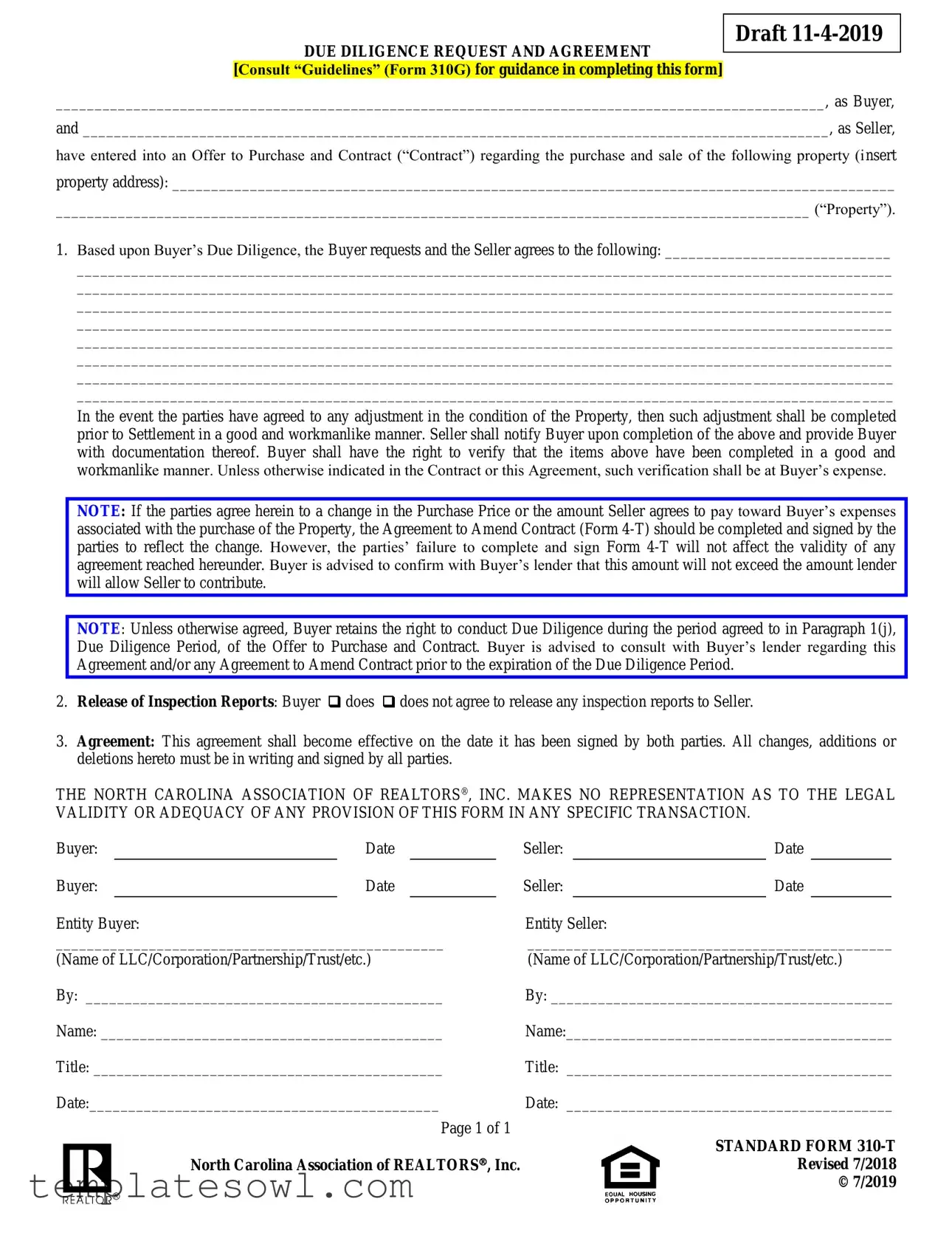___________________________________________________________________________________________________, as Buyer,
and ________________________________________________________________________________________________, as Seller,
have entered into an Offer to Purchase and Contract (“Contract”) regarding the purchase and sale of the following property (insert
property address): _____________________________________________________________________________________________
_________________________________________________________________________________________________ (“Property”).
1.Based upon Buyer’s Due Diligence, the Buyer requests and the Seller agrees to the following: _____________________________
_________________________________________________________________________________________________________
_________________________________________________________________________________________________________
_________________________________________________________________________________________________________
_________________________________________________________________________________________________________
_________________________________________________________________________________________________________
_________________________________________________________________________________________________________
_________________________________________________________________________________________________________
_________________________________________________________________________________________________________
In the event the parties have agreed to any adjustment in the condition of the Property, then such adjustment shall be completed prior to Settlement in a good and workmanlike manner. Seller shall notify Buyer upon completion of the above and provide Buyer with documentation thereof. Buyer shall have the right to verify that the items above have been completed in a good and workmanlike manner. Unless otherwise indicated in the Contract or this Agreement, such verification shall be at Buyer’s expense.
NOTE: If the parties agree herein to a change in the Purchase Price or the amount Seller agrees to pay toward Buyer’s expenses associated with the purchase of the Property, the Agreement to Amend Contract (Form 4-T) should be completed and signed by the parties to reflect the change. However, the parties’ failure to complete and sign Form 4-T will not affect the validity of any agreement reached hereunder. Buyer is advised to confirm with Buyer’s lender that this amount will not exceed the amount lender will allow Seller to contribute.
NOTE: Unless otherwise agreed, Buyer retains the right to conduct Due Diligence during the period agreed to in Paragraph 1(j), Due Diligence Period, of the Offer to Purchase and Contract. Buyer is advised to consult with Buyer’s lender regarding this
Agreement and/or any Agreement to Amend Contract prior to the expiration of the Due Diligence Period.
2.Release of Inspection Reports: Buyer does does not agree to release any inspection reports to Seller.
3.Agreement: This agreement shall become effective on the date it has been signed by both parties. All changes, additions or deletions hereto must be in writing and signed by all parties.
THE NORTH CAROLINA ASSOCIATION OF REALTORS®, INC. MAKES NO REPRESENTATION AS TO THE LEGAL VALIDITY OR ADEQUACY OF ANY PROVISION OF THIS FORM IN ANY SPECIFIC TRANSACTION.
Buyer: |
|
|
Date |
|
|
Seller: |
|
|
Date |
|
|
Buyer: |
|
Date |
Seller: |
|
Date |
Entity Buyer: |
|
|
|
|
Entity Seller: |
|
|
|
|
__________________________________________________ |
|
_______________________________________________ |
(Name of LLC/Corporation/Partnership/Trust/etc.) |
(Name of LLC/Corporation/Partnership/Trust/etc.) |
By: ______________________________________________ |
By: ____________________________________________ |
Name: ____________________________________________ |
Name:__________________________________________ |
Title: _____________________________________________ |
Title: __________________________________________ |
Date:_____________________________________________ |
Date: __________________________________________ |
|
|
|
|
Page 1 of 1 |
|
|
|
|
|
|
|
|
|
|
|
|
|
|
STANDARD FORM 310-T |
|
|
North Carolina Association of REALTORS, Inc. |
|
|
|
Revised 7/2018 |
|
|
|
|
|
|
|
|
© 7/2019 |

